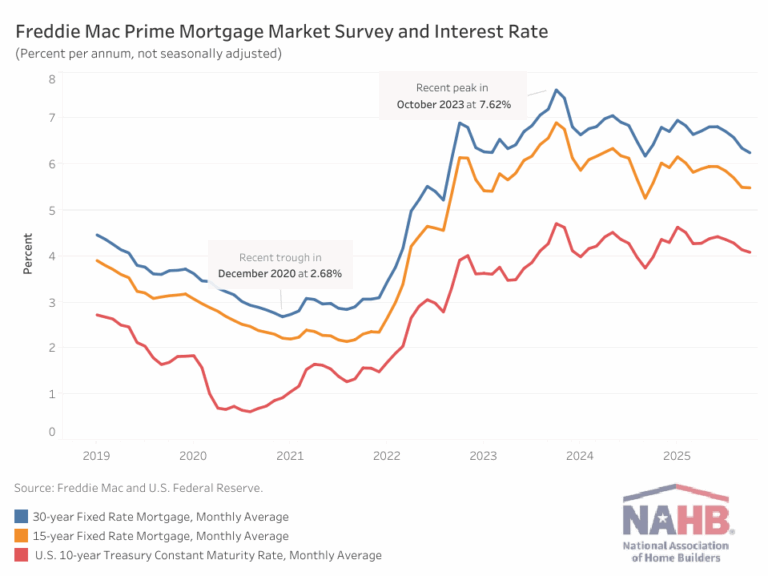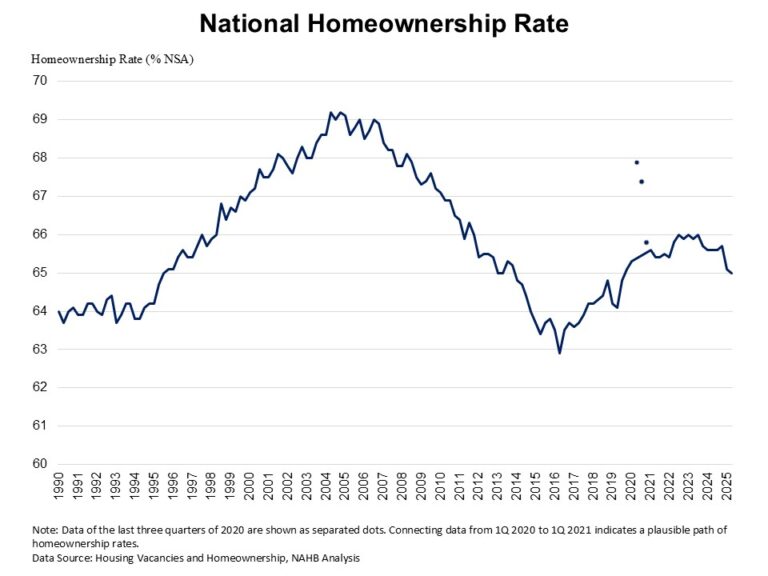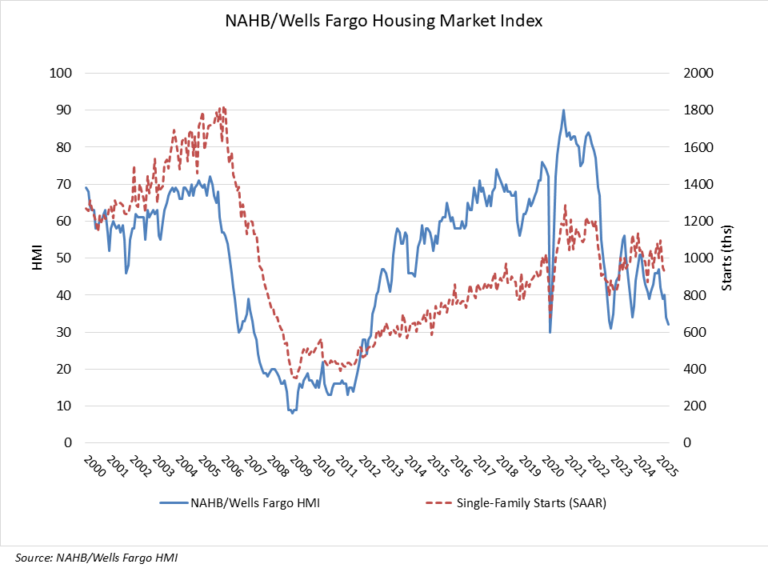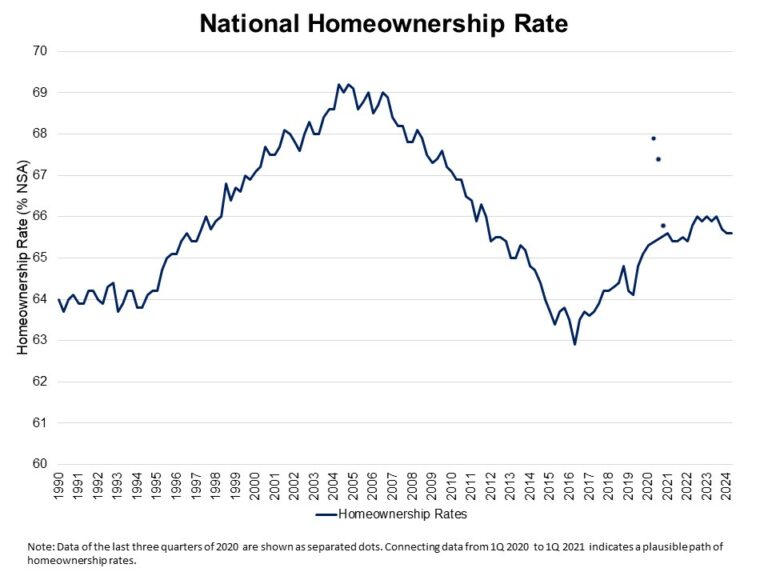Average mortgage rates in October trended downward to the lowest rates in over a year. According to Freddie Mac, the 30-year fixed-rate mortgage averaged 6.25% in October, 10 basis points (bps) lower than September. Meanwhile, the 15-year rate declined just 1 bp to 5.49%. Both the 30-year and 15-year rates remain lower than a year ago, dropping by 17 bps and 11 bps year-over-year, respectively.
The 10-year Treasury yield, a key benchmark for long-term borrowing, averaged 4.09% in October – a 5-basis point decrease from the previous month. Markets priced in rate cuts from the Fed at the start of the month, resulting in relatively unchanged rates following the announcement of a 25 bps cut to the federal funds rate on October 29th.
Falling mortgage rates have shown some small impacts on housing activity. According to the latest Mortgage Bankers Association (MBA) report, mortgage application activity strengthened, with refinancing applications rising and purchase applications also increasing. Additionally, existing home sales rose to a seven-month high in September. There is no data available for new home sales in September due to the government shutdown.
Looking forward, the industry faces a bifurcated market characterized by a weakening job market and elevated inflation. Additionally, there are wildcard factors such as the upcoming Supreme Court case regarding the legality of recent tariffs and lack of economic data. As a result, the vote at the December Fed meeting will be difficult to predict.
Discover more from Eye On Housing
Subscribe to get the latest posts sent to your email.
This article was originally published by a eyeonhousing.org . Read the Original article here. .




